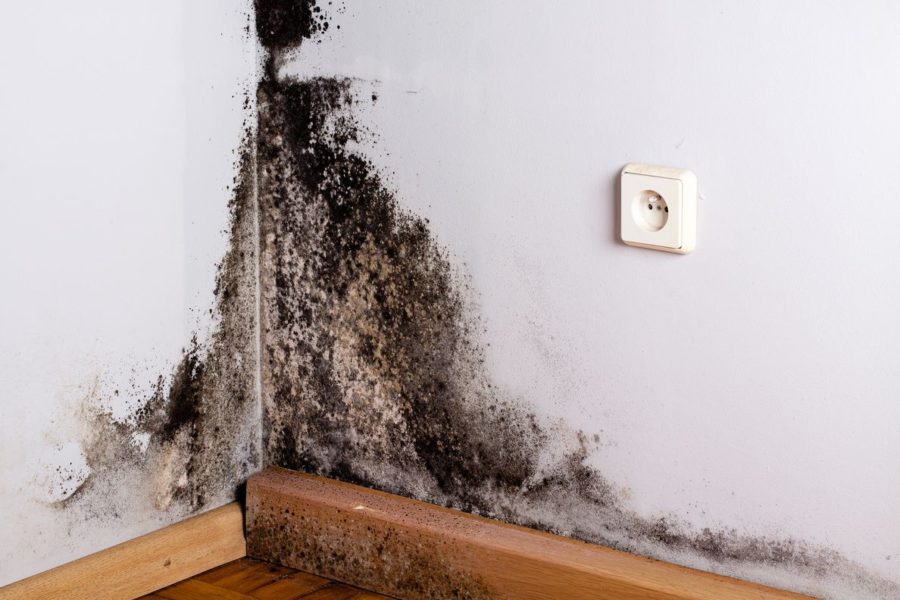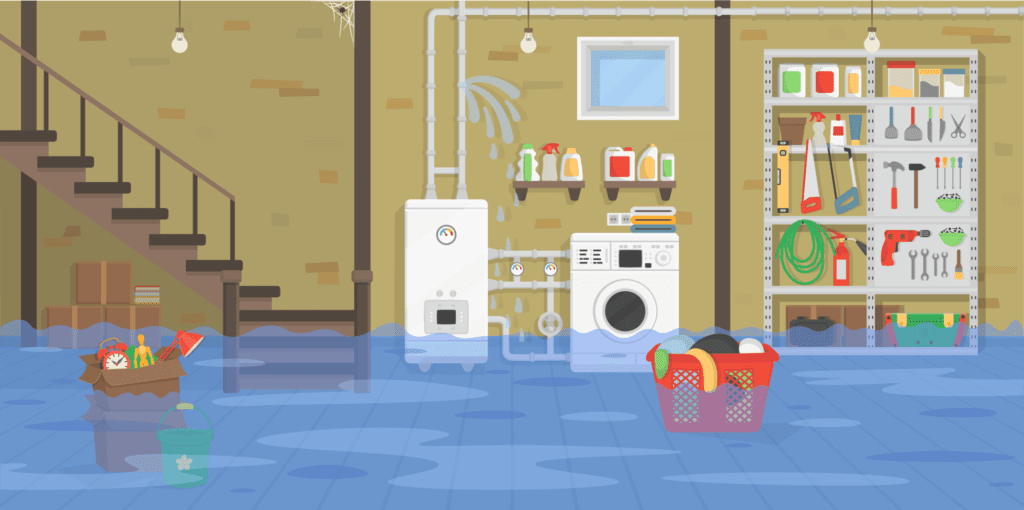
Mold spores are found everywhere and are usually harmless. But when mold lands on a damp surface, it can start to grow. When it grows out of control, it can cause breathing issues, a runny or bloody nose, and other health issues. It is something we don’t ever want to see in our homes, but it does happen. Our rainy wet weather in Washington State and humid mornings can add to the increase in the growth of mold, but it doesn’t have to. Let’s take a look at some ways to find the mold and stop the growth in the home:
Using Your Sense of Smell- Does It Smell Musty or Damp?
When you walk around your house, do you notice a musty smell? Not sure where to check in your house? Check out areas such as the laundry room, basement, and crawl spaces and see if they are damp. It is not always possible to see the mold so you may need to do a home mold test or call in a professional.

Recent Flooding
We get a lot of rain in Washington State and if you have any flooding during or after these storms, you might have issues. The mold spores may not have started right after the flood but could be growing now. Check under carpets and in the areas mentioned above to see if there is mold. If it is growing on the carpet, you will need to replace it and consider an alternative flooring material. You won’t be able to see it inside the walls and a mold test from a professional can help.
Mold Color- It Determines A lot!
Mold comes in many colors and much of it is harmless. However, if you notice black, green, or yellow mold, these can be harmful to you and your family. Mold removal will be important if you see these colors appear.
Uh-Oh, I See Mold! What Do I Do Next?
If you see a large amount of mold in your home, clean the surface with soap and water or a vinegar mixture and call a professional. If it is visible, this may be just a small part of a big problem going on where you can’t see it. A professional can come in and check your home for mold, test the air quality, and find the root of the problem. Hopefully, it is a small problem that can be fixed and not expensive to get under control.
Ideas for Prevention of Mold
The CDC recommends the following for the prevention of mold in the home:
1. Check around roofs, windows, and pipes for leaks. If you find any leaks, it is important to have it fixed right away.
2. If you have experienced flooding in your home, there can be damage. Everything in the house must be thoroughly cleaned and dried to be safe. Failing to do so can cause mold to grow not only on surfaces you can see but also in areas such as the inside of walls that you can’t see. Damaged carpet that is growing mold or won’t dry, means it is time to find new flooring.
3. Ventilate areas in the home such as the shower, laundry room (and soap tray in the washer) and cooking areas. This will allow the humidity to have a place to escape and not start mold growth. Low humidity in the home; below 60%, and using a dehumidifier and an air conditioner for the warmer days and months is optimal.
4. Upgrade filters- Using air conditioning filters that are a Merv 11 or 13 will filter out allergens and particles in the air and help keep your home allergen-free.
5. If you have a basement, think twice about having carpet in there. Opting for another type of flooring, such as tile or wood is a good idea. This is the same for bathrooms and will help prevent mold.
You can also read more about how to get rid of a musty smell.
Following these recommendations above can help you keep your home mold-free. As always, clean homes can still have issues so prevention is the key. If you have any concerns, please call us at Boggs today.



